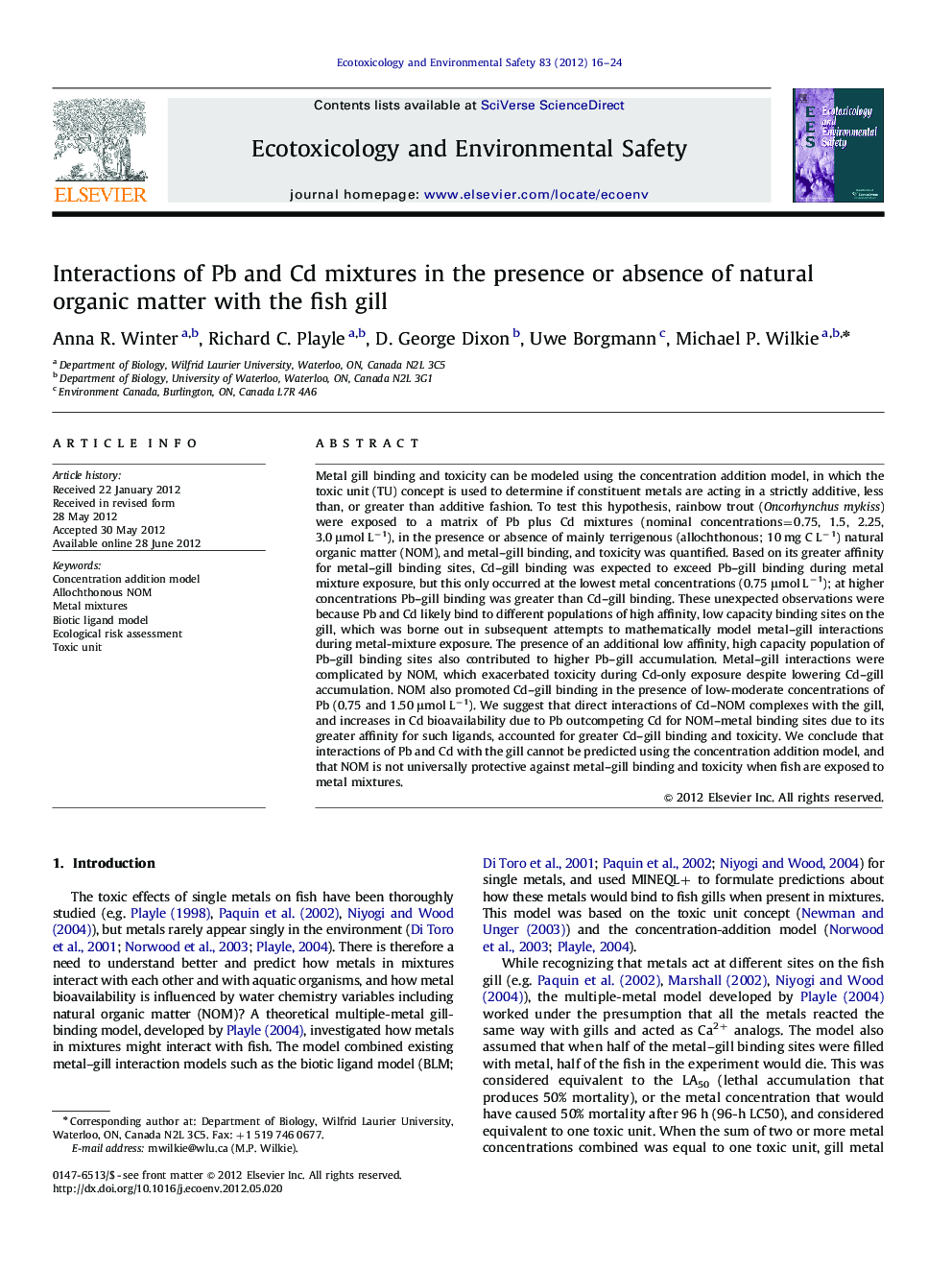| کد مقاله | کد نشریه | سال انتشار | مقاله انگلیسی | نسخه تمام متن |
|---|---|---|---|---|
| 4420824 | 1618980 | 2012 | 9 صفحه PDF | دانلود رایگان |

Metal gill binding and toxicity can be modeled using the concentration addition model, in which the toxic unit (TU) concept is used to determine if constituent metals are acting in a strictly additive, less than, or greater than additive fashion. To test this hypothesis, rainbow trout (Oncorhynchus mykiss) were exposed to a matrix of Pb plus Cd mixtures (nominal concentrations=0.75, 1.5, 2.25, 3.0 μmol L−1), in the presence or absence of mainly terrigenous (allochthonous; 10 mg C L−1) natural organic matter (NOM), and metal–gill binding, and toxicity was quantified. Based on its greater affinity for metal–gill binding sites, Cd–gill binding was expected to exceed Pb–gill binding during metal mixture exposure, but this only occurred at the lowest metal concentrations (0.75 μmol L−1); at higher concentrations Pb–gill binding was greater than Cd–gill binding. These unexpected observations were because Pb and Cd likely bind to different populations of high affinity, low capacity binding sites on the gill, which was borne out in subsequent attempts to mathematically model metal–gill interactions during metal-mixture exposure. The presence of an additional low affinity, high capacity population of Pb–gill binding sites also contributed to higher Pb–gill accumulation. Metal–gill interactions were complicated by NOM, which exacerbated toxicity during Cd-only exposure despite lowering Cd–gill accumulation. NOM also promoted Cd–gill binding in the presence of low-moderate concentrations of Pb (0.75 and 1.50 μmol L−1). We suggest that direct interactions of Cd–NOM complexes with the gill, and increases in Cd bioavailability due to Pb outcompeting Cd for NOM–metal binding sites due to its greater affinity for such ligands, accounted for greater Cd–gill binding and toxicity. We conclude that interactions of Pb and Cd with the gill cannot be predicted using the concentration addition model, and that NOM is not universally protective against metal–gill binding and toxicity when fish are exposed to metal mixtures.
► Trout were exposed to Pb–Cd mixtures in the presence/absence of NOM.
► Pb–gill exceeded Cd–gill accumulation, due to a 2nd population of Pb binding sites.
► NOM exacerbated toxicity during Cd-only exposure despite lower Cd–gill accumulation.
► NOM promoted Cd–gill binding in the presence of Pb.
► NOM is not universally protective against metal–gill binding and toxicity in fish.
Journal: Ecotoxicology and Environmental Safety - Volume 83, 1 September 2012, Pages 16–24